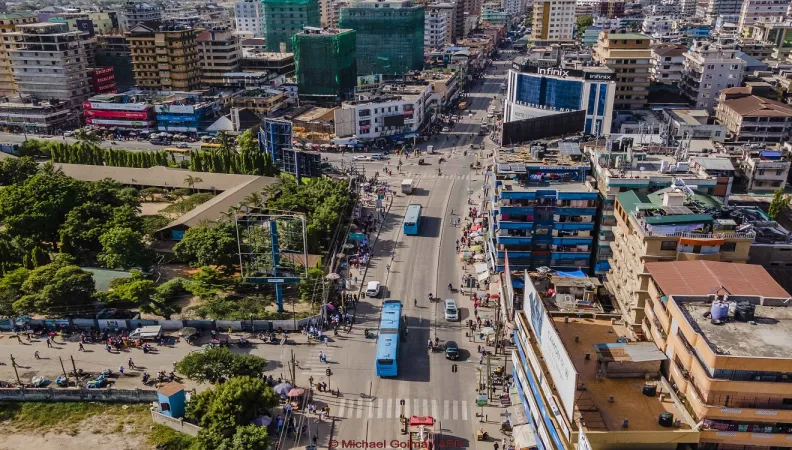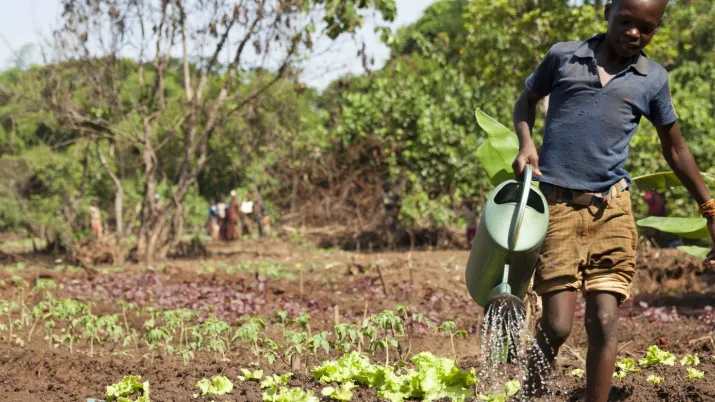Share the page
Taxation: a Key Source of Revenue to Finance Development in Africa
Published on

Tax is one of the few certainties in life. But governments around the world have a hard time collecting it, and struggle financially as a result. Yet more robust fiscal regimes can raise the revenue necessary for more effective development, particularly in Africa. The book, “African Economies 2023” probes the issue across the continent, and reveals a strikingly mixed picture.
Contenu de la page
Tax the richest to “give to the poorest,” and escape IMF “diktats”. This is what Tunisian President Kaïs Saïed proposed last June in the midst of the country’s economic and financial crisis. In June, South Africa introduced a new tax on tobacco products, while there have been violent protests on the streets of Kenya for weeks over new controversial taxes in a time of galloping inflation.
These recent events highlight the importance of tax revenues in Africa - and the difficulty that governments can have introducing levies that are fair, effective and accepted by the population.
But they are also an important signal to investors at home and abroad. “In a macroeconomic context of widespread uncertainty, with risk premiums reaching record levels in Africa, a sound tax administration can reduce investors’ perception of risk,” says Arthur Minsat, Head of the OECD’s Unit for Africa, Europe and Middle East and co-author of the book on African economies’ performance, L'Économie Africaine 2023, published by La Découverte with AFD’s support.
In a chapter devoted to taxation, economists Arthur Minsat, Suzanne Bonmartel, Sébastien Markley and Dossina Yeo from the African Union, chart public revenues in Africa, as well as their importance in reducing socio-economic inequality.
Difficult to mobilize revenues in hydrocarbon-rich countries
The experts begin with a region where tax revenues are among the lowest in the world. While tax revenues average about 33% in OECD countries, the figure for Africa was 16% in 2020 – some five percentage points below Asia and the Pacific.
But this average masks wide disparities. “It’s hard to talk about ‘one Africa’, because there are several Africas. At one end of the spectrum, we have Tunisia, Morocco and South Africa, whose tax revenues are higher than the average in Latin America. On the other end of the spectrum are countries rich in hydrocarbon resources, like Chad, the Congo and Nigeria, where revenues are below 15%,” says Artur Minsat.
Then there is Nigeria, the largest economy in the region, with a tax-to-GDP ratio of just 5.5% in 2020 – last place among the 31 African countries for which data are available. In such “rentier” economies, natural resources provide such a high source of revenue that governments often depend on them from just a few commodities rather than introduce more broad-based tax measures. “This dependence makes them vulnerable to market fluctuations and prevents governments from achieving effective budgetary planning,” says Minsat. Following the drop in oil prices in 2014 and 2015, for instance, Chad’s tax-to-GDP ratio fell from just over 15% in 2013 to 5.8% in 2015.
The informal economy: a fiscal vacuum
Across the continent, millions of workers toil under the taxman’s radar, and are deprived of the social protection that depends on tax revenues. Africa has the lowest social protection coverage in the world (17% of the total population, against a global average of 47%). Yet such coverage is crucial for tackling inequality on a continent with seven of the ten most unequal countries in the world.
To tax the informal sector, some African administrations “encourage workers to report to the competent authorities, offering them social coverage,” note the authors. “They can then develop progressive taxation.”
Some governments use alternative forms of taxation. For example, Ghana has introduced the National Health Insurance Levy, a value-added tax to finance the national health insurance scheme. However, taxes like VAT apply to all transactions irrespective of income – i.e. a kind of flat tax – meaning they do nothing to reduce socio-economic inequalities, in contrast to direct taxation and spending on education and health.
Much-needed reforms
When it comes to redistribution, Morocco, South Africa and Tunisia are among the countries that serve as a model. In 2020, social security contributions accounted for 10% of Tunisia’s GDP and 6.6% of Morocco’s GDP, in contrast to the average of 1.5% for 26 of the 30 African countries for which data are available. Morocco and Tunisia have the most developed social security schemes in Africa.
Overall, with its tax-to-GDP ratio of 32.5%, Tunisia sits at the top of the fiscal chart. “If all African countries taxed like Tunisia, the continent would bring in $500 billion of additional revenue per year, or 2.5 times more than the $194 billion of additional annual funds the continent needs to achieve the Sustainable Development Goals,” says Sébastien Markley.
To better mobilize tax resources, several African countries are innovating in taxation by introducing new taxes (such as environmental levies or taxes on hazardous products), or modernizing their tax administration.
“Administrative reforms, such as better identification systems, the use of new technologies, and more transparent communication towards taxpayers to increase fiscal legitimacy are essential improvement tools,” says Arthur Minsat. Using technologies to improve tax collection for example, Mali increased its tax-to-GDP ratio by 3.5 percentage points between 2018 and 2019.
The authors of L'Économie Africaine 2023* call for such practices to be disseminated across the continent and beyond. This would also help to combat tax evasion, which represents a shortfall of $89 billion per year for Africa, according to the United Nations Conference on Trade and Development.
* The introduction and first chapter of the book on African economies have been translated into English.
Further reading
Improved Food Security will require More Inter-African Trade
Why is food insecurity again on the rise in Africa? Bio Goura Soulé, co-author of the African Economies in 2023 report, lays out the reasons in detail. The professor and researcher specializing in liv...
Published on February 20 2023

